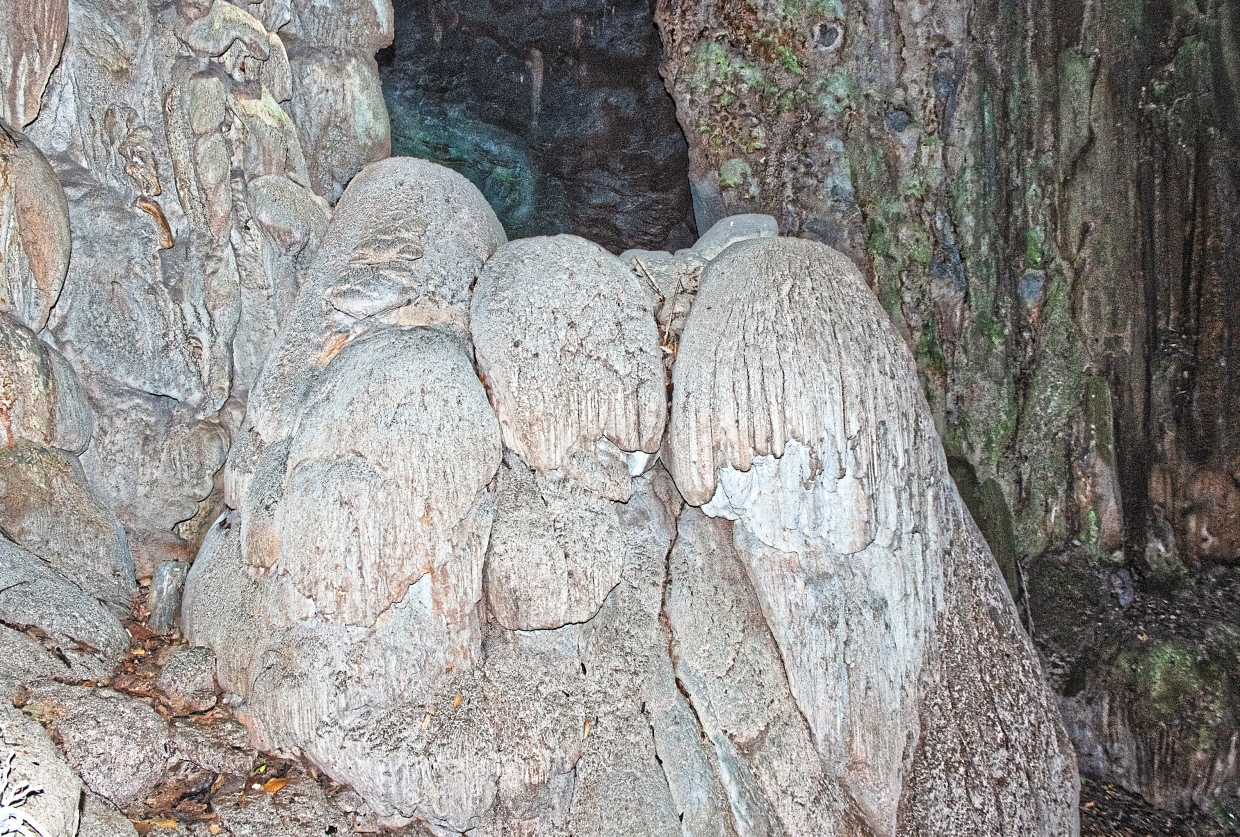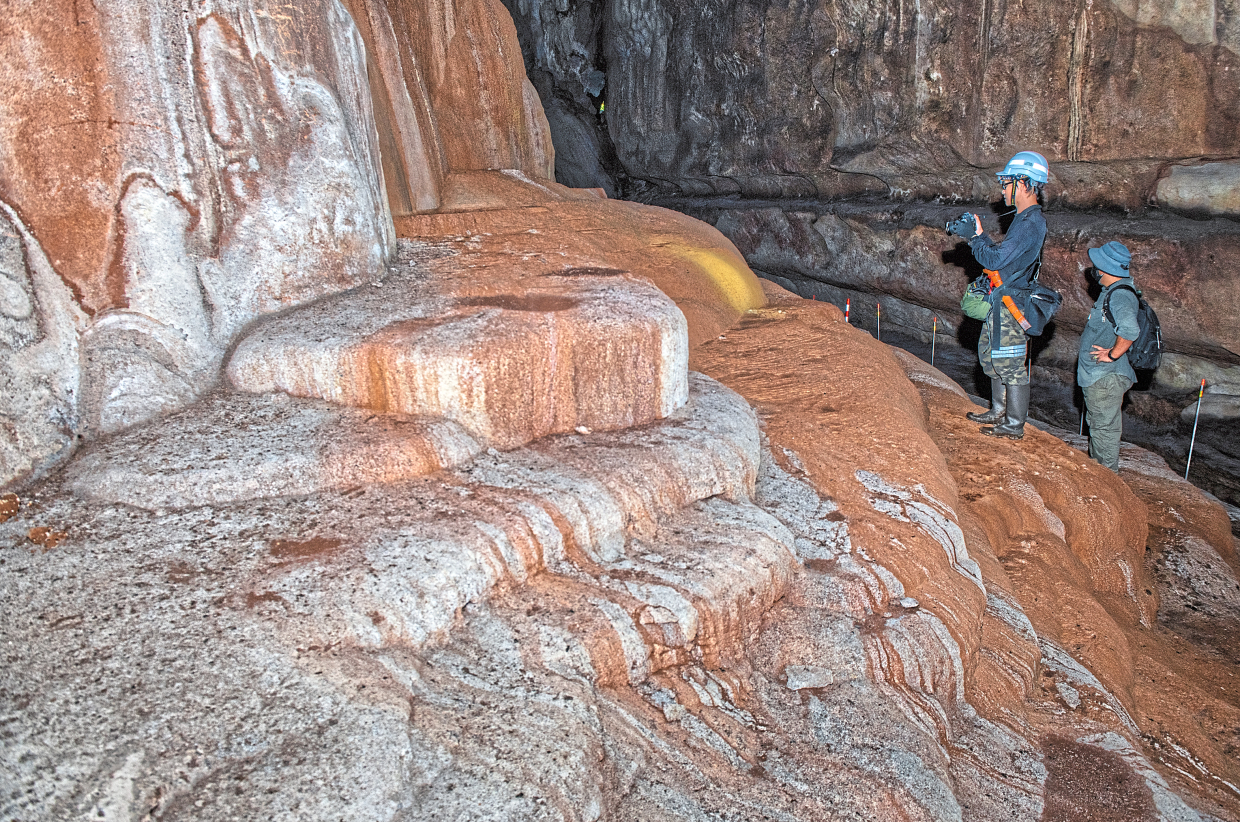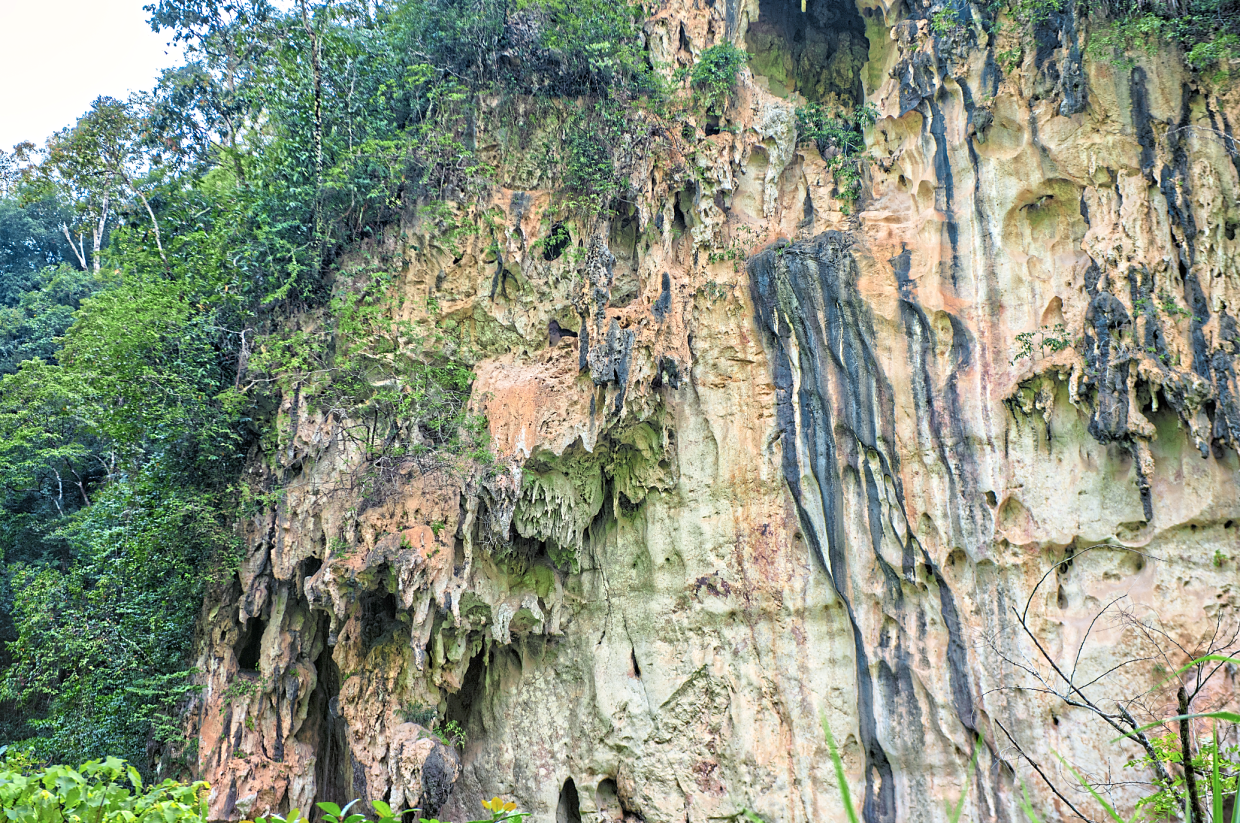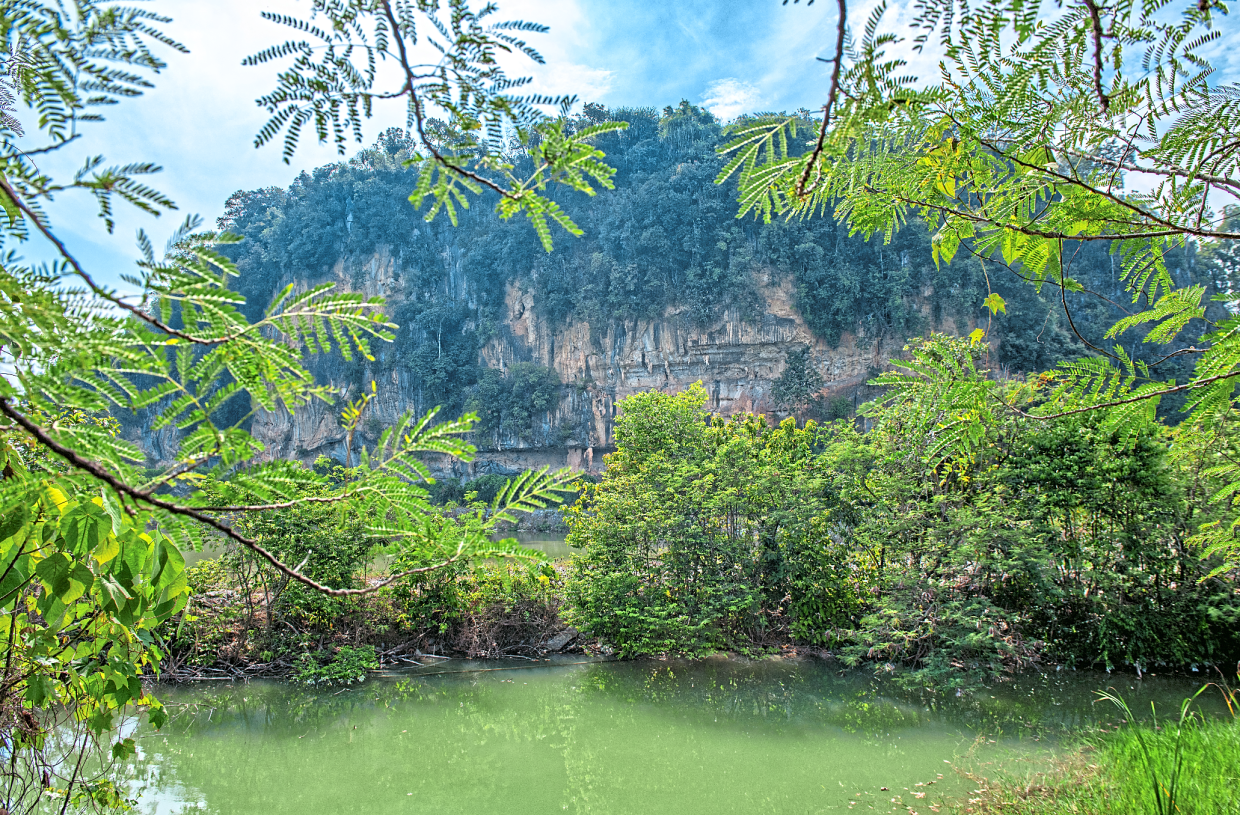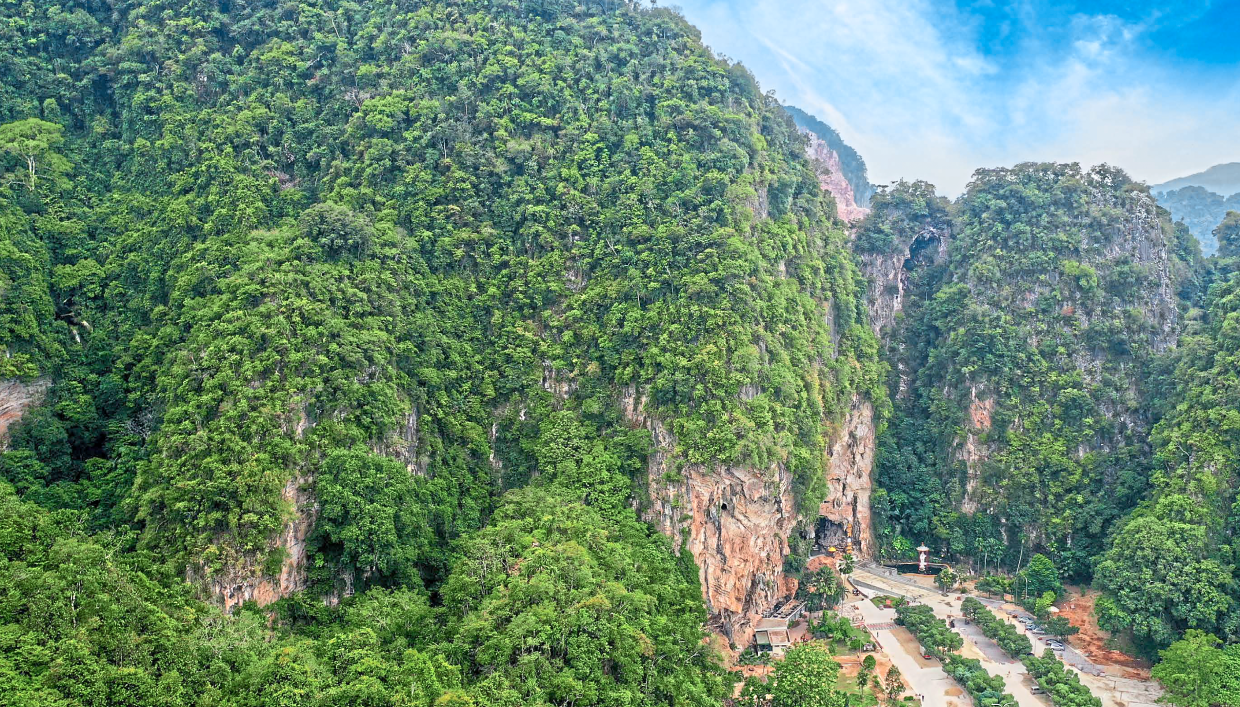Unique sights: Water notch and Kanthan River inside Kanthan Cave. Tropical limestone karst landscapes support rare and endangered flora and fauna that needs to be researched and catalogued. — Photos: YTL Cement
THE cement industry and limestone extraction are inseparable, as the latter is an integral part in cement manufacturing.
That said, Malaysia’s largest cement manufacturer, YTL Cement, is doing what it can to help scientists understand limestone hills better, especially the unique biodiversity that these ecosystems support.
In this regard, YTL Cement and the Higher Education Ministry, through their University-Industry Research Consortium (UIRC), recently unveiled the recipients of inaugural scholarships and grants for tropical karst research.
Karst refers to the topography, which can be above or below ground, formed from the dissolution of carbonate rocks such as limestone and dolomite.
The awards were handed out at the recent UIRC symposium at Shah Alam called Tropical Karst Landscape: The Challenges for Conservation and Sustainable Use.
Established in October 2023, the UIRC brings together Universiti Kebangsaan Malaysia, Universiti Sains Malaysia, Universiti Malaysia Pahang, Universiti Malaysia Sabah, and Universiti Malaysia Sarawak for research on Malaysia’s tropical limestone karst landscapes.
“Over the next five years, the consortium will award scholarships to 40 Masters and PhD students to provide the country with a comprehensive understanding of our tropical limestone karst landscapes needed to make informed decisions on its sustainable management,” said UIRC director Prof Emeritus Datuk Ibrahim Komoo.
As the first consortium of its kind in Malaysia, UIRC is intended to foster a robust university-industry collaboration, aligning postgraduate research with national priorities, while enhancing synergy between academia and industry for mutual benefit.
The symposium also introduced the UIRC Young Researcher Industrial Grant, offering up to RM30,000 for early-career academics for innovative projects that have interdisciplinary features that could lead to practical solutions for sustainable limestone quarrying.
“Limestone karsts are valuable natural resources, essential for human use and civilisation. Through the UIRC, we are empowering young researchers to develop innovative solutions that balance progress with environmental stewardship,” said Ibrahim.
The UIRC came about following the signing of a memorandum between the Higher Education Ministry and Associated Pan Malaysia Cement Sdn Bhd, a subsidiary of YTL Cement Bhd.
Under the collaboration with the five local universities mentioned, YTL Cement will provide a matching grant together with the ministry to qualified students from 2023 to 2028, to encourage better understanding of limestone, especially the unique ecosystem and habitats for conservation and sustainable use.
“The UIRC is a platform that nurtures the next generation, bringing together academic excellence, industry insights, and environmental wisdom to shape policies and innovations that safeguard these ecological wonders,” added Ibrahim.
The first six recipients of the UIRC scholarships are Siti Noor Syafarehan Mohd Isa (UKM), Nurul Azira Mohd Zamziba (UKM), The Nesda Rojuin (UMS), Nurul Hazlina Acheh (Unimas) Shaelza Sacha Shalmon (UMS), and Hilda Tee Suiwei (UMS).
The symposium also allowed knowledge exchange among scholars and industry leaders on subjects related to the importance of balancing conservation and development against the backdrop of sustainable cement manufacturing, an irreplaceable element for the construction of modern infrastructure.
Along with presentations from experts like Prof Datuk Dr Mokhtar Saidin (archaeology), Prof Dr Norhayati Ahmad (biodiversity), and Dr Rapidah Mat Stafa (geoheritage), the scholars showcased their projects ranging from cave system mapping to the quantification of limestone hills’ ecological services.
The research consortium will take a multidisciplinary approach when looking at these five key areas: Geodiversity and tropical limestone karst landscapes; biodiversity and tropical limestone karst ecosystem; archaeology, history and culture in tropical limestone karst; economic and sustainable management of limestone resources; and sustainable use of tropical limestone karst landscape for conservation and public education.
Commenting on the collaboration, the ministry said in an earlier statement that the UIRC will ensure that universities’ post-graduate research will be relevant to the needs of the country, while strengthening the bond between universities and industry, and in this case, the results of these research efforts are likely to provide information that will complement the National Mineral Policy.
The bulk of the research work will be centred around the APMC Kanthan Plant near Sungai Siput (Utara), which was inaugurated by the first Prime Minister, Tunku Abdul Rahman Putra Al-Haj, in 1963 after Perak awarded the quarry site to APMC for cement production.
Since 2014, APMC has carried out some conservation work around the southern part of its Kanthan Quarry, where Bukit Kanthan, home of Gua Kanthan, is located. The entire area, including the quarry sites, is called Gunung Kanthan, while Bukit Kanthan is the south most hill which has been mapped and designated as the Bukit Kanthan geosite.
Gunung Kanthan was identified in 1991 as one of the four most important karst areas in Perak for conservation, with Gua Kanthan itself known as the only place on earth that is home to the trapdoor spider (Lipistius kanthan), which lives alongside other rare species.
The idea of developing Kinta Valley into a national geopark was first mooted in August 2014, with the National Geopark Evaluation Commission studying the feasibility in 2017.
At the last count, there were 223 species of moss and vascular plants, of which 32 are of conservation importance; 19 are endemic to the region, with Bukit Kanthan alone hosting 12 endangered species along with 11 rare species.
Further impetus for conservation came in tandem with Perak’s declaration of the Kinta Valley as a National Geopark in 2018, making it the country’s second national geopark after Langkawi’s Unesco Global Geopark.
Straddling the Kinta and Kampar districts, the Kinta Valley geopark covers an area of 1,952sq km. Within the park lies 18 geosites, which includes Gunung Lang, Tambun Cave, Naga Mas Cave, Gua Tempurung, Gunung Korbu, Jeram River, Hutan Lipur Ulu Kinta, and Sungai Salu Waterfall, among others.
YTL Cement, with the assistance of a team of experts, mapped the boundary of the Bukit Kanthan Geosite, while detailed mapping of Bukit Kanthan was carried out to establish the heritage value.
The team has expertise that is locally and internationally recognised in the fields of earth science, specialising in biodiversity, landscape and geoheritage, and conservation geology, among others.
Its study identified the geological, geomorphological, and high value biological components in the Bukit Kanthan Geosite that sufficiently represent the whole of the Gunung Kanthan limestone area.
Over the longer term, there are plans to set up a centre at the Bukit Kanthan Geosite that will serve as a research and education hub on tropical limestone karst.




